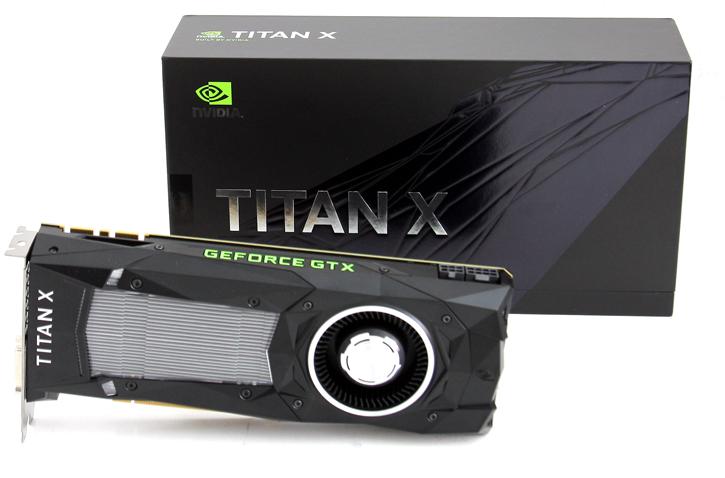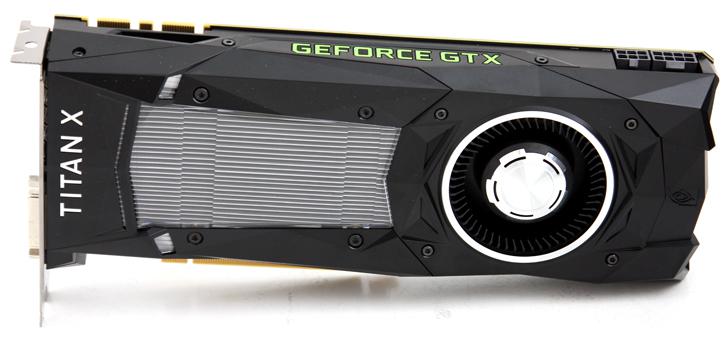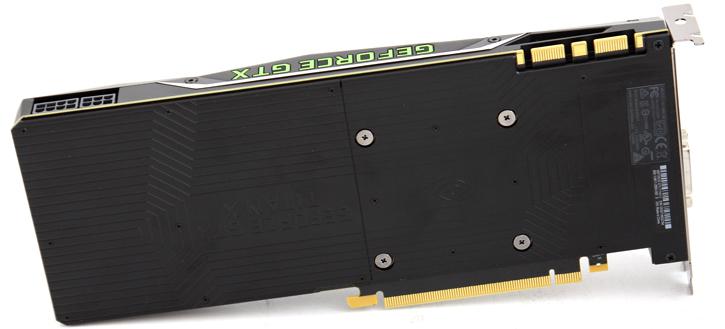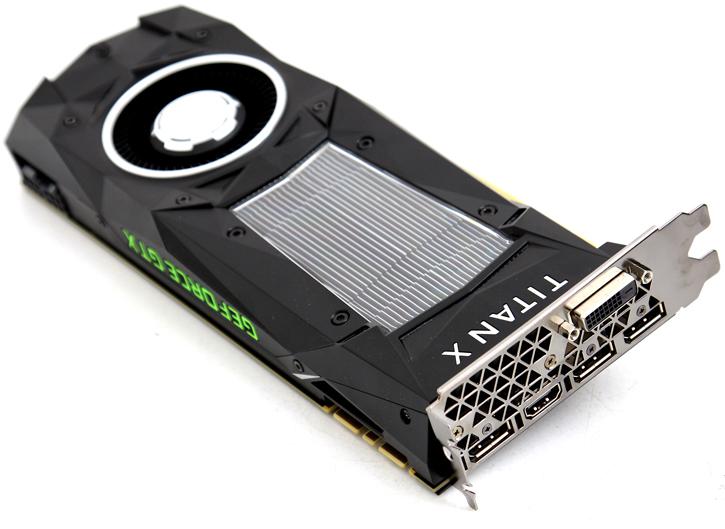Product Showcase
Product Showcase
Let's start with our photo-shoot. A few pages that show the ins and outs with photos, all taken with an in-house photo-shoot of course.
So as you can see, the Nvidia Titan X (2016) is looking quite a bit like the previous GeForce GTX models, again a similarly fashioned cooler is being used. This round however there are subtle changes in aesthetics, with the cooler shell showing triangles (the base unit for render polygons/objects/scenes). There's a LED in the top side fan housing (controlled with GeForce Experience) and the Titan X is displayed in matte black. The cooler is offered as a premium solution, there (at this point) are no board partners card planned.
The card once again is your standard dual-slot solution, its cooling is vapor chamber based. The cooler's Plexiglass allows you to actually look into the heatsink's aluminum fins. The fan is outfitted with a special design, its airflow is carefully directed to take in air from the PC and exhaust it outside the PC, in order to optimize cooling efficiency while minimizing noise causing restrictions. The Titan X will have a maximum power design of roughly 250 Watts, but yes, these are made to overclock as well. As such, Nvidia is using one 150+75 Watts 8-pin and one 6-pin PEG (PCI Express Graphics) connector. Another 75 to 150 Watts is delivered though the PCIe slot and thus motherboard.
As you can see, a two-part back-plate. The opinions on back-plates differ per person. Of course they protect the backside of the PCB and its components, but back-plates can also easily trap heat. This design seems to do just that, hence I am not a fan of it. I would have liked to have seen many meshes and airflow vents. And then they are often added for aesthetic reasons of course.
The Titan X 2016 edition will offer five display connectors; you'll spot three DisplayPort connectors, one full size HDMI connector and one DVI connector. DisplayPort is 1.2 certified and DP 1.3/1.4 Ready, enabling support for 4K displays at 120Hz, 5K displays at 60Hz, and 8K displays at 60Hz (using two cables). The card includes three DisplayPort connectors, one HDMI 2.0b connector, and one dual-link DVI connector. Up to four display heads can be driven simultaneously from one card. The GTX 1080 display pipeline supports HDR gaming, as well as video encoding and decoding. New to Pascal is HDR Video (4K@60 10/12b HEVC Decode), HDR Record/Stream (4K@60 10b HEVC Encode), and HDR Interface Support (DP 1.4).





